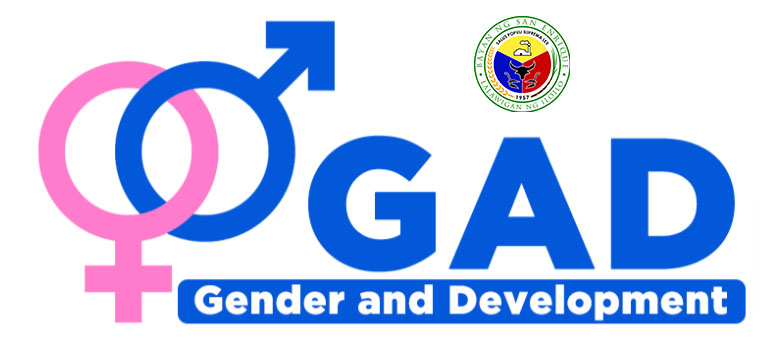Gender and Development Corner

This is in compliance to Executive Order No. 273 directing all national government offices and instrumentalities and local government units to take appropriate steps to ensure full implementation of the policies, strategies, programs and projects outlines in the Philippine Plan for Gender-Responsive Development, and in consonance with Joint Memorandum Circular No. 2013-01 approving the implementing Rules and Regulations on the Localization of the Magna of Women.
This initiative aims to inspire and support development policy and practice, for social justice and gender equality.
GAD OVERVIEW
WHAT IS GENDER AND DEVELOPMENT (GAD)
- is a development perspective that recognizes the unequal status and situation of women and men in society.
- Women and men have different development needs and interests, which is institutionalized and perpetuated by cultural, social, economic and political norms, systems and structures.
GOAL OF GAD
- As a development approach, GAD seeks to equalize the status and condition of and relations between women and men by influencing the process and output of policy-making, planning, budgeting, implementation and monitoring, and evaluation so that they would deliberately address the gender issues and concerns affecting the full development of women.
GENDER EQUITY
- This means giving more opportunities to those who have less and those who are historically and socially disadvantaged based on their needs for them to operate on a level playing field. “Focusing on the needs of women does not mean discriminating against men or putting them at a disadvantage”
- UN–CEDAW (United Nations Convention on the Elimination of All Forms of Discrimination Against Women) recognized the need to remove the biases against and provide special attention to women through affirmative action. It is a temporary measure that will be discontinued when the objectives of equality of opportunity and treatment have been achieved.
GENDER MAINSTREAMING
- Is the Philippine government’s strategy for making agencies work for women’s empowerment and gender equality.
- It is the process of analyzing existing development paradigms, practices, and goals; assessing the implications for women and men of existing legislation policies, programs, projects, and mechanisms.
WOMEN’S EMPOWERMENT
- Is a goal of and an essential process for women’s advancement.
- Is a process and condition by which women mobilize to understand, identify, and overcome gender discrimination and achieve equality.
- Women become agents of development and not just beneficiaries.
- A kind of participation in development that enables women to make decisions based on their own views and perspective.
- To empower women, access to information, training, technology, market, and credit is necessary.





